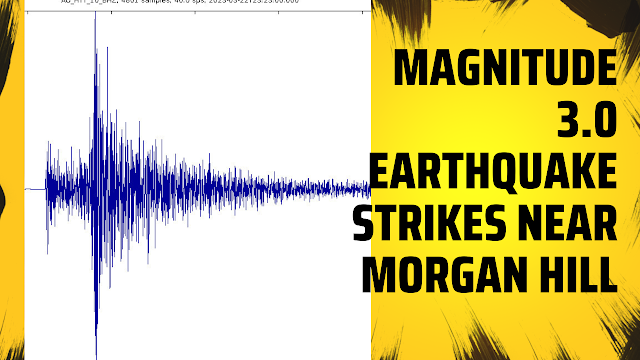A preliminary magnitude 3.0 earthquake struck on Tuesday morning about 12 miles from Morgan Hill, California. The quake hit around 9:40 a.m. and was felt throughout the surrounding area. There were no initial reports of damages or injuries, but the incident is a reminder of the dangers posed by seismic activity in the region.
The earthquake’s epicenter was located about 8 miles from San Martin, a small census-designated place in Santa Clara County. While this earthquake was relatively small, the region has a long history of destructive earthquakes. The most infamous of these was the 1906 San Francisco earthquake, which measured 7.8 on the Richter scale and caused widespread destruction throughout the Bay Area.
California is located along the boundary of the Pacific and North American tectonic plates, which makes it one of the most seismically active regions in the world. This boundary is known as the San Andreas Fault, which is responsible for many of the largest and most destructive earthquakes in the state’s history.
Seismologists have been monitoring this fault for decades, and they have developed a comprehensive understanding of the risks posed by seismic activity in the region. The US Geological Survey has predicted that there is a 63% chance of a magnitude 6.7 or greater earthquake striking the Bay Area by 2030. While this may seem like a remote possibility, the truth is that it’s not a question of if, but when.
The Bay Area is home to millions of people, and many of them are unaware of the risks posed by seismic activity. In order to prepare for the next big earthquake, it’s important to understand what causes earthquakes and how to protect yourself and your property during an earthquake.
Earthquakes are caused by the sudden movement of tectonic plates. When these plates move, they can cause vibrations in the ground that can be felt for miles around. The strength of an earthquake is measured on the Richter scale, which ranges from 1 to 10. A magnitude 3 earthquake is considered to be relatively small, but it can still cause damage to buildings and infrastructure.
One of the most important things you can do to protect yourself during an earthquake is to drop, cover, and hold on. This means that when you feel an earthquake, you should immediately drop to the ground, take cover under a sturdy piece of furniture, and hold on until the shaking stops. This will help protect you from falling debris and other hazards.
It’s also important to prepare your home and property for an earthquake. This means securing heavy objects that could fall and cause damage, and making sure that you have emergency supplies on hand in case of a power outage or other disruption.
In addition to preparing your home and property, it’s important to have a plan for what to do in the aftermath of an earthquake. This means knowing where to go and who to contact if you need assistance, and having a supply of food, water, and other necessities on hand in case you need to evacuate your home.
If you live in the Bay Area, it’s important to stay informed about seismic activity in the region. There are many resources available online, including the US Geological Survey’s earthquake monitoring website and local news sources. By staying informed and taking the necessary precautions, you can help protect yourself and your loved ones from the dangers of earthquakes.
In conclusion, the recent magnitude 3.0 earthquake near Morgan Hill is a reminder of the risks posed by seismic activity in the Bay Area. While this earthquake was relatively small, the region is at high risk for larger, more destructive earthquakes in the future. By understanding the risks and taking the necessary precautions, you can help protect yourself and your property during an earthquake.


0 Comments